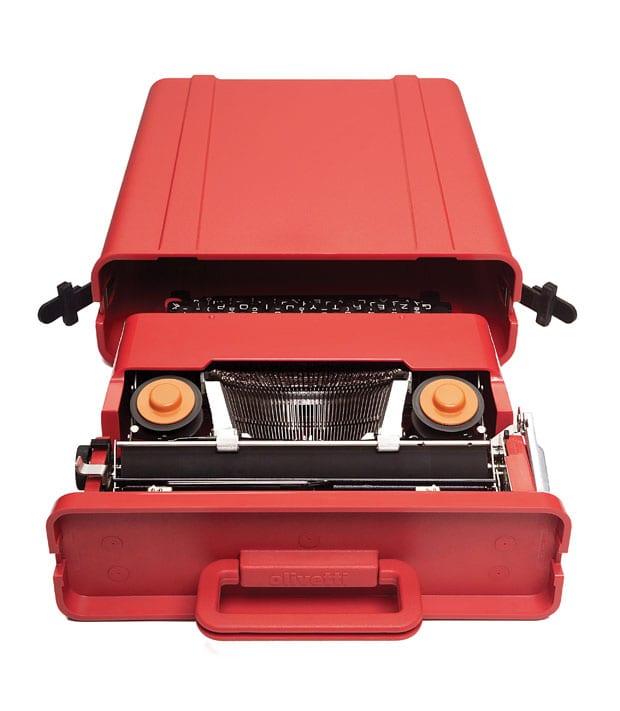
words Johanna Agerman
In 1970 Richard Burton was snapped arriving at Heathrow airport with a customised Valentine portable typewriter on one arm and his wife Elizabeth Taylor on the other. That picture epitomised the territory that the Valentine was meant to occupy. Glossy, sexy and desirable, it was the it-bag of its day.
Designed by the late Ettore Sottsass with the British designer Perry King for Italian firm Olivetti, the Valentine typewriter was launched in 1969. Forty years on it is still in demand among collectors, if not consumers – most museums with a design collection own a Valentine typewriter as an example of pop design. It presaged what Jonathan Ive and Apple achieved in the late 1990s with the rainbow-coloured iMacs – to make boring office equipment fit for the world of leisure.
Sottsass once said: “When I was young, all we ever heard about was functionalism, functionalism, functionalism. It’s not enough. Design should also be sensual and exciting.” With the Valentine typewriter he achieved that, introducing his love for pop aesthetics into contemporary design. The typewriter’s smooth, sumptuous lines and the punchy colours of its ABS plastic – it came in red, white, green and blue – introduced a measure of fun and humour to an area that had long taken itself too seriously: the office. This was no typewriter for the efficient secretary, it was a tool for individualised talents and improvised performance. Sottsass said that the Valentine could be “used any place except in an office, so as not to remind anyone of monotonous working hours, but rather to keep amateur poets company on quiet Sundays in the country”.
The iconic image of the Valentine was enhanced by the poster campaign that accompanied it. Sottsass’ own graphic of the Valentine typewriter in white against a red background is probably the most recognised, but American graphic designer Milton Glaser created another using a detail of Piero di Cosimo’s painting Satyr Mourning over Nymph. Here the Valentine is painted into the renaissance landscape next to a dog, suggesting that it, too, was man’s best friend.
This evocative, emotional marketing was a product of the genius of Adriano Olivetti, founder of the office machine company, who as early as the 1930s employed graphic artists, painters, architects, writers and advertising experts alongside the company’s manufacturing division. He realised the potential of fetishising objects that seemed resistant to fetishisation.
But despite its sex appeal and its portable design, the Valentine never found a mass audience. The price was too high and the technology was too quickly superseded. Even Sottsass became disillusioned with it: “[It was] too obvious, a bit like a girl wearing a very short skirt and too much make-up.” In 2007, Sottsass told icon that it was the Valentine that made him reconsider his position as a designer, encouraging him turn his back on industrial production and take the more rarefied, artistic direction he is best known for (icon 046).
Curiously, the promise of the Valentine was never realised. Despite the advent of the virtual office and more flexible working conditions, most employers are still reported to prefer to have staff at their desks. In an era where the portable typewriter has been replaced by the laptop, Blackberry and iPhone most of us are still encouraged to work in uninspiring environments that have more to do with the factory of the 19th century than the futuristic office of the 21st.

















